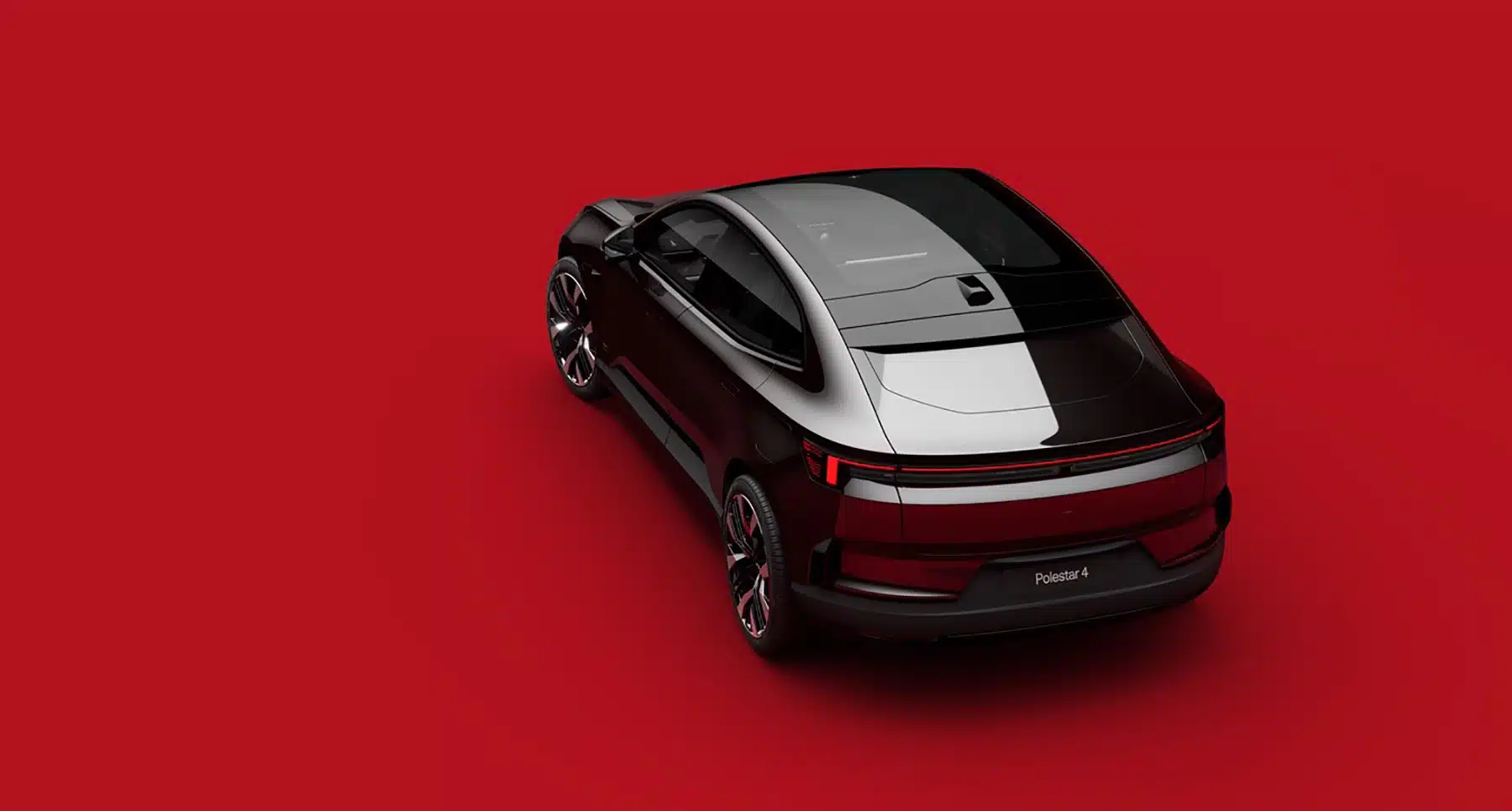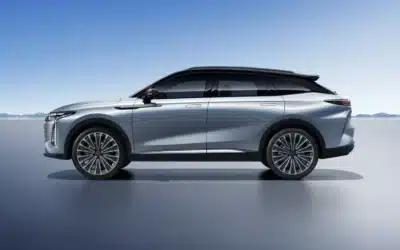
Polestar, the Swedish electric car maker, has unveiled its latest model, the Polestar 4, a mid-size SUV coupé that is set to go on sale in 2024.
One of the most striking things about the Polestar 4 is its lack of a rear window. This is a bold design choice, but it is one that Polestar believes will make the car more aerodynamic and efficient. The radical design also provides a more cocoon-like and comfortable interior for the rear passengers, says the company. The idea was initially tried in the Precept concept car, a version of which is due to come to market in 2024 as the Polestar 5.
Polestar can remove the rear window by using a high-definition screen that replaces the rear-view mirror. This shows a real-time feed from a rear camera on the car roof, and delivers a much wider field of vision.
Maximilian Missoni, Chief Designer at Polestar explained to WIRED: “Camera tech now is very high resolution, it works well at night time, and the software is constantly being upgraded so we can add value into the system over time. We could remove the rear window and move the whole structure further back.”
Thomas Ingenlath, Polestar’s CEO, elaborates on the boldness of the approach: “With Polestar 4 we have taken a fundamental new approach to SUV coupé design. Rather than simply modifying an existing SUV, giving it a faster roofline and as a result, compromising elements like rear headroom and comfort, we have designed Polestar 4 from the ground up as a new breed of SUV coupé that celebrates rear occupant comfort and experience.”
The Polestar 4 is also packed with other technology. It features a 39cm infotainment system, a 25.9cm digital driver’s display, and a 37.3cm head-up display. The car also comes with a variety of advanced driver assistance systems, including adaptive cruise control, lane keeping assist, and automatic emergency braking.
In terms of performance, the Polestar 4 is powered by a dual-motor electric powertrain that produces 400 kW (544 hp) and 686 Nm of torque. This gives the car a 0-100 km/h time of just 3.8 seconds and a top speed of 210 km/h, making it Polestar’s fastest product car to date.
The Polestar 4 will be built on the same platform as the Volvo XC40 Recharge. This platform is designed specifically for electric vehicles, and it offers a number of advantages, including improved efficiency and performance. It has an EPA-estimated range of up to 724 km on a single charge.
Polestar 4 aims for sustainability by using circular, low-carbon materials and enhancing supply chain transparency via blockchain traceability for battery risk materials. For the interior, the model uses a ‘mono-material approach’, initially featured in the 2022 Polestar electric roadster concept, that reduces the number of materials used in the vehicle. This improves recycling efficiency.
These interior materials include 100% recycled PET tailored knit textile, bio-attributed MicroTech vinyl, and animal welfare-secured Nappa leather. Developed with the Swedish School of Textiles and suppliers, the tailored knit textile reduces waste, while carpets incorporate recycled PET and ECONYL. Door trim panels use natural fiber polypropylene, cutting virgin plastic usage and weight.
Polestar has not yet announced pricing for the 4, but in the US it is expected to start at around $60,000 (around AED220,000).
How does it compare with similar cars?
The car will be a direct competitor to other mid-size electric SUVs, such as the Tesla Model Y, the Audi e-tron, and the BMW iX3.
The Tesla Model Y is the most popular electric SUV on the market. It too offers a long range, a variety of performance options, and a large interior. However, it is also the most expensive of the three competitive cars.
The Audi e-tron is a more luxurious option than the Model Y. It has a more upscale interior and a wider range of standard features but is less efficient.
The BMW iX3 is a more sporty option than the Model Y or the e-tron. It has a more aggressive design and a more engaging driving experience. However, it is also the least efficient of the three cars.
All in all, the Polestar 4 is shaping up to be a strong competitor in this field.
As Thomas Ingenlath concludes: “The Polestar 4 is a car that is designed to challenge the status quo. It is a car that is built for the future, and it is a car that is sure to turn heads.”











